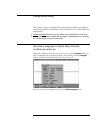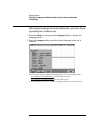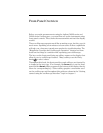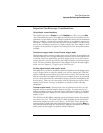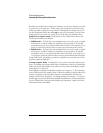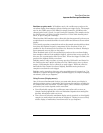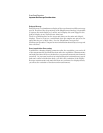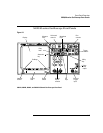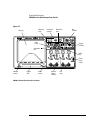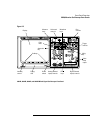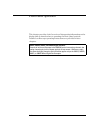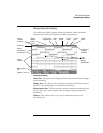
2-5
Front-Panel Overview
Important Oscilloscope Considerations
Realtime acquire mode In Realtime mode, the oscilloscope produces the
waveform display from samples collected during one trigger event. The sample
rate for the 54620-series is 200 MSa/s for single channel or 100 MSa/s with
channel pairs 1 and 2, 3 and 4, or pod 1 and pod 2 running. The sample rate for
the 54640-series is 2 GSa/s for single channel or 1 GSa/s with channel pairs 1
and 2, or pod 1 and pod 2 running.
When less than 1000 samples can be collected in the time spanned by the screen,
a sophisticated reconstruction filter is used to fill in and enhance the waveform
display.
To accurately reproduce a sampled waveform, the sample rate should be at least
four times the highest frequency component of the waveform. If not, it is
possible for the reconstructed waveform to be distorted or aliased. Aliasing is
most commonly seen as jitter on fast edges.
When Realtime mode is off, the oscilloscope produces the waveform display
from samples collected from multiple triggers, when on fast sweep speeds. In
this case, the reconstruction filter is not used. When the trigger is stable, this
produces the highest fidelity waveform.
Realtime mode is only necessary at sweep speeds of 200 ns/div and faster for
the 54620-series and 2
µs/div and faster for the 54640-series, since on these
ranges <1000 samples can be collected on each trigger. While the effective
bandwidth of the channel is reduced slightly, Realtime mode produces a
complete waveform for each trigger.
Realtime can be turned on when any other acquisition mode is turned on. Use
Realtime to capture infrequent triggers, unstable triggers, or complex changing
waveforms, such as eye diagrams.
Using Vectors (Display menu)
One of the most fundamental choices you must make about your display is
whether to draw vectors (connect the dots) between the samples, or simply let
the samples fill in the waveform. To some degree, this is a matter of personal
preference, but it also depends on the waveform.
• You will probably operate the oscilloscope most often with vectors on.
Complex analog signals like video and modulated signals show analog-like
intensity information with vectors on.
• Turn vectors off when the maximum display rate is required, or when highly
complex or multi-valued waveforms are displayed. Turning vectors off may
aid the display of mulitvalued waveforms such as eye diagrams.



